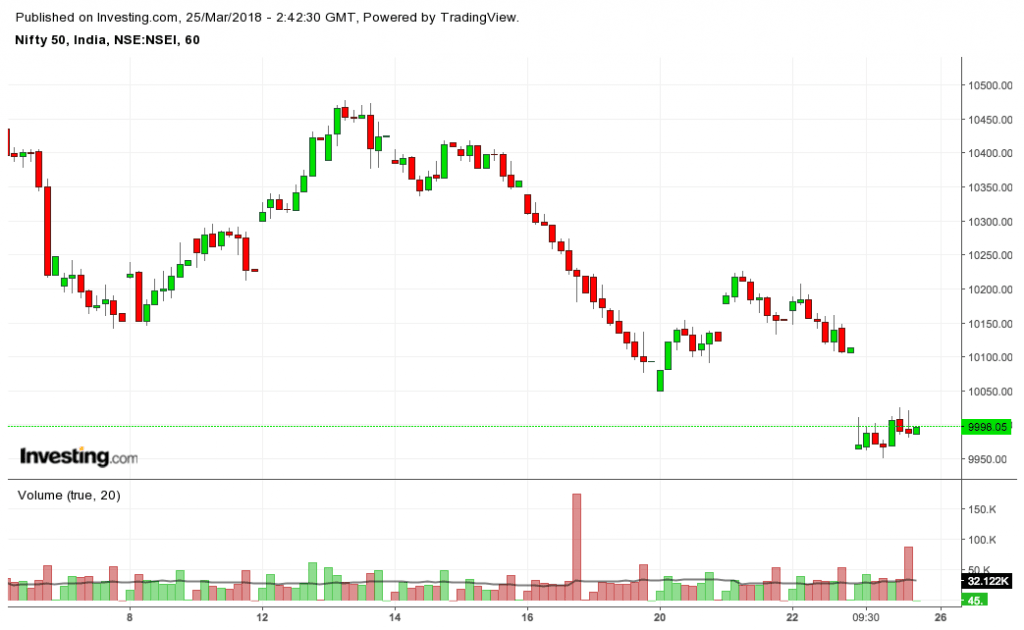
Every once in a while this is the question asked by new trader’s, both in trading forums as well as general forums like Quora. The question can be asked in any of the following variations:
How much should I save before I start trading (both intraday & swing trading)?
How much money is required for intraday trading?
What is the minimum money I need to start stock investing?
The answer is: For investing, there is no minimum amount you need to buy stocks in India(or any stock market).
But for trading, it is not so simple. Though you can open an account with Rs. 1000/- or less, this is not sufficient for trading. Even 20,000 is not a safe amount for trading successfully in the long term.
So, what is the minimum amount you need for trading?
Minimum trading capital required: calculation
First things first, you need to have a properly developed trading system to be able to get profits from trading.
Why is that? In short:
The reason is that without a trading system, you have no idea how much is the average expected return of your method?
You see here I am referring this as your method and not from trading. It is because there are plenty of trading methods and each of them has the potential to earn money. But, you can earn money only from the method that suits you.
You can’t expect a calm analytical mind to earn from an intraday trading or event-based trading method. Such a person will benefit more from swing trading based on longer duration charts.
Read: Why do you need a proper trading system before you start trading?
Now, once you have a trading system, you can backtest it on historical data to find out the expected return.
Let’s say your system or your method of trading the market gives you an average return of 5% per month ( which is very high to maintain), then to earn an income of 10,000 per month you need around Rs. 2,00,000 /- as trading capital.
2,00,000 * 0.05 = 10,000
But here is the catch, maintaining this level of return is not easy. Ask anyone who has traded regularly for more than 1 year.
You have good months and you have bad months. And due to the human nature of dealing with bad months differently than good months, the results are unpredictable.
So, how to calculate?
Again you check your historical data.
See what is the drawdown of your system?
Once you have a drawdown figure, add it to your base trading capital (or at least half of it). So if your drawdown down is 15%. Then 15% of 2,00,000 is 30,000. Thus a proper trading capital for your would-be 2,30,000 /-.
Now that we have the number, time to know why this much money for such a small amount of 10,000?
You must have heard about lots of people making quick money with a lot less trading capital. The reason is that these are purely one of the cases.
Whereas here I am talking about making money from trading for the long term. Not for immediate financial gratification.
And if not, then you should know that most people who enter the field of trading leave trading within the first month because they have lost their money.
How to add risk per trade to calculate trading capital required?
This factor is even more important than calculating what you need per month. But, still, I am telling it here, after the other two factors.
You see unless you have a reality test about what all it takes to develop trading as a business and income-generating, there are high chances you won’t calculate the risk that comes with each trading decision.
Risk Management is a full topic in itself, for which read:
Here, in short, the acceptable figure by professional traders is ~2% of trading capital in each trade.
Which means, for the capital of Rs. 2,00,000 you should take risk of around 4,000 only. Which in approximate terms for NIFTY future becomes 4000/75 = 53 point stop loss or around 25 point stop loss for 2 lots of NIFTY.
This seems like a very cautious figure, but believe me, it is not.
It is more important to be able to survive few losses here and there, then get wiped out in one (or two) big trades. And these figures have survived the test of the times.
Yes, you will find traders who are trading with more risks. In their scenario, there are two things:
- They are trading with a system, which suits them, adopted by them and works for them in a certain way only. Most of them are not working to grow their trading capital to big levels, but a rather small side income.
- They are trading with such small capitals that they are not serious about that money itself.
We are none of the above scenarios, which means we approach it like a serious business and create good income from trading.
Is trading viable as a full-time option?
Those who survive the first month, 97% leave within the first year. and then out of remaining only 1% make money.
The good news?
Those who survive this initial period, they make serious money from trading. There are many people in the Indian stock market who are earning a good income from trading only. It is their full-time profile.
More good thing?
All you need is a laptop and a good internet connection. No chasing clients like freelancers or jostling in office politics.
The only issue is that it takes a lot of learning in the beginning. Well, which career that pays well, doesn’t?
You can’t have a good-paying career without working for it.
The only not so good issue with other career options is that even if you are very good, you have to deal with lots of other issues too.
In trading, there is no such thing. All you have to deal with is lots of free time, just like a clockwork. Sounds unreal? It is not.
The market is open only for a limited period, you can’t trade when the market is not open. There is no call from home, late client meetings, no deadlines, no office time rush. Nothing.
Can I start trading with a small amount and then grow my trading capital?
In simple words, you can. But then you have to adjust your trading style according to the capital you have.
An important factor in the above calculation is risk management. This is what keeps the trading system profitable in the end.
For a moment, let’s say you are planning to trade in NIFTY futures. Now, the trading margin required is only Rs. 52000 ( as per Zerodha, Upstox as in March 2018). This means for this amount you can have approximately 4 lots of NIFTY for a carried position. Or you can trade 1 lot with trading capital of only 53k.
Isn’t it?
Well, quite simply no. You can but then there are high chances that you will lose more than you will win.
You see, you can not predict market movements with absolute certainty. When you are trading, you are making decisions based on probabilities, which can go wrong. You should be ready to take that loss into the picture too. (Hence the drawdown concept mentioned above).
This means if your stop-loss is hit, let’s say of 20 points, then you lost (75*20 = 1500/-) which means now your ability to trade another lot is lost. And what is the guarantee that the next trade will be profitable, or next to that?
You see market 80% of the times market is just consolidating in a certain range and it is trending only 20% of the time.
Thus, you can’t underestimate the risk or money management factor in any trading plan.
So, the only way is to change the way you trade. Like buying delivery shares, instead of futures. The only issue is that you won’t be able to short the market. But in the face of the risk that trading with less amount of money does, that is a better choice.
